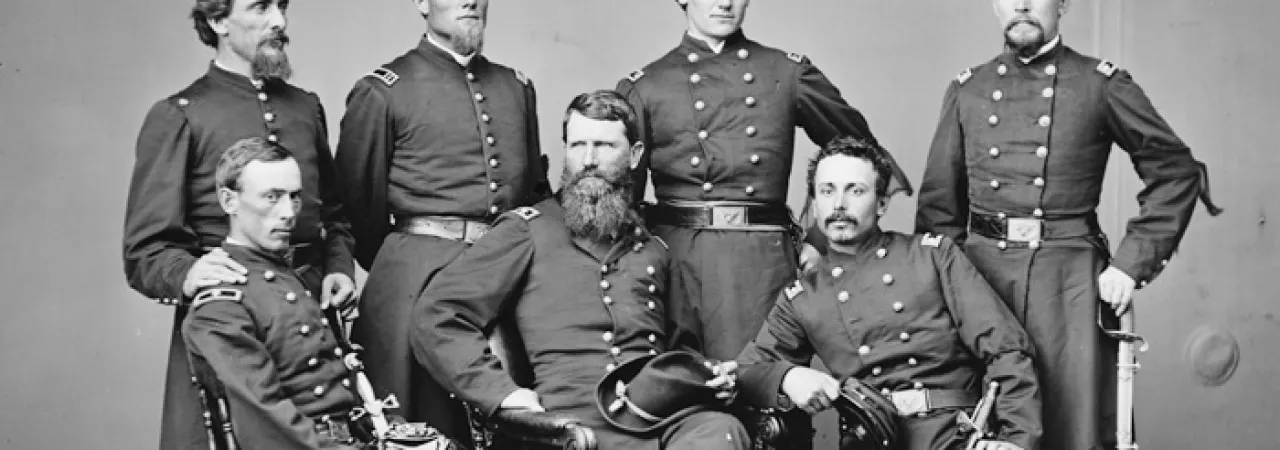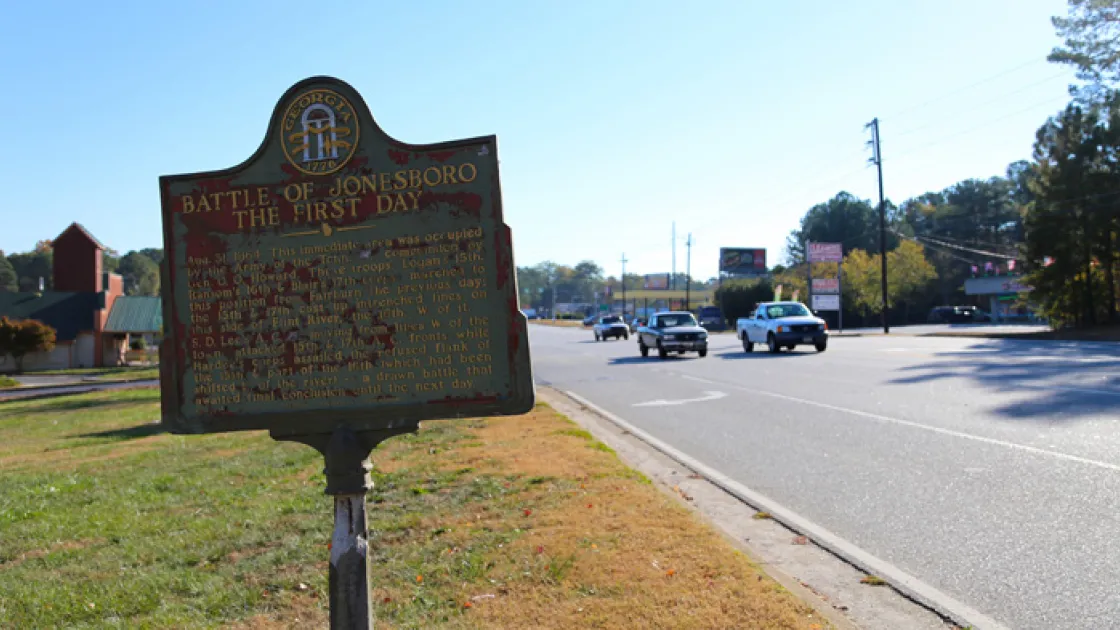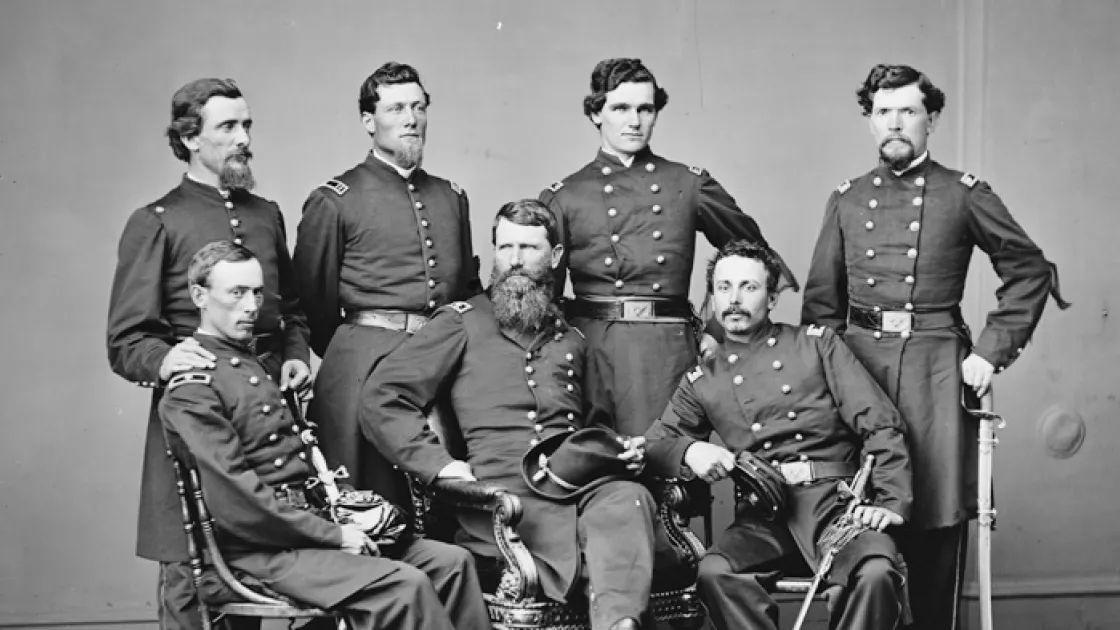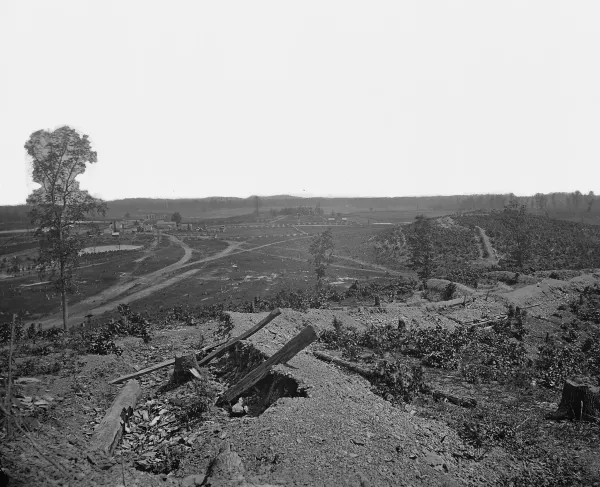
After three Union cavalry raids failed to cut the Macon & Western railroad, Maj. Gen. William T. Sherman judged, "I expect I will have to swing across to that road in force to make the matter certain." Sherman left the Twentieth Corps at the Chattahoochee and with his six other corps marched southwest of Atlanta, then swung east, aiming to cut the railroad between East Point and Jonesboro. Sherman was not just making an infantry raid on the Macon & Western; he was throwing virtually his entire army upon it. This "grand swing by the right" began on August 25.

Gen. John Bell Hood soon learned from his cavalry at noon on the 27th that enemy infantry were marching south toward Fairburn, strength as yet unknown. On the 28th, Hood ordered two brigades to move south by rail to Jonesboro. He suspected some sort of raid on the railway, but was unsure of the Yankees's objective. By the 29th, Hood concluded that maybe two of three Union corps were involved. By the next day, Confederates knew that five, maybe even six corps were involved, but they didn't know exactly where they were heading. Hood ordered S.D. Lee to move his headquarters to East Point; he sent General William J. Hardee four miles further down the road to Rough and Ready to sift through cavalry reports. Lastly, Hood had sent two brigades of infantry to Jonesboro. In the meantime, Hood held Stewart's corps and the military within the works of Atlanta to guard the city. On the morning of August 30, cavalryman Frank Armstrong, eight miles west of Jonesboro, reported a strong infantry force moving against him.

On the 30th, having wrecked miles of the West Point Railroad, the Fourth and Twenty-third Coprs marched eastward to strike the Macon road south of Rough and Ready. Maj. Gen. Oliver O. Howard's Army of the Tennessee headed straight for Jonesboro, with the Fourteenth Corps taking different roads to its left; Armstrong's Southern cavalry, battling Kilpatrick, contested Howard's advance throughout the day. Despite this resistance, and despite Sherman's advice that Howard could stop his march that day short of Jonesboro if he wanted to, Howard decided to press on, largely because his thirsty men needed watering at the Flint River. Around 5 p.m. Howard's advance reached the Flint and battled retreating Rebel cavalry across the river bridge. Howard's army dug in, expecting to be attacked in what General Blair called its "saucy position." John A. Logan's Fifteenth Corps entrenched on the high ground east of the river. A division of the Sixteenth Corps formed on its right; the Seventeenth started crossing the river to form on the left.

Armstrong wired Hood that the Yankees, now just a mile west of Jonesboro, could attack the railroad that very night. Quickly Hood ordered Hardee to march his corps to Jonesboro, and told Lee to follow. Meanwhile he told the small force at Jonesboro to "hold your position at all hazards. Help is ordered to you." Hood ordered Hardee and Lee on August 31 to take their corps to Jonesboro and attack the enemy, assumed to be three corps, and drive them away. Yet already Hood was preparing for the worst: he ordered the army's ordnance reserve packed on trains and taken out of the city.

Hardee's plan called for the assault to begin against the Federal right, with Maj. Gen. Patrick Cleburne's division on the extreme left, wheeling northward to turn the enemy flank. Then, from south to north, the rest of the line would pick up the attack; Lee's divisions would advance after Cleburne "had hotly engaged the enemy at close quarters." Around 3 p.m. Cleburne began his attack, heading for John Corse's division, entrenched on a ridge. An attack by Hugh J. Kilpatrick's cavalry forced the Southerners to fight off to their left. Then Brown's division went in, but under heavy artillery and rifle fire fell back. On Lee's front, six brigades of Patton Anderson's and Carter Stevenson's division met the same bloody repulse. General Anderson himself was severely wounded, shot in the jaw. By 4:30, all along the line, the Southerners were withdrawing to their original positions.
Casualties for the day reflected the usual disproportion between defender and attacker. While Federal losses totaled a mere 179 killed and wounded, S.D. Lee estimated 1,300 casualties in his corps alone, and Hardee would have lost another 400. Having been beaten in assault, Hardee rightly concluded that "it now became necessary for me to act on the defensive."



